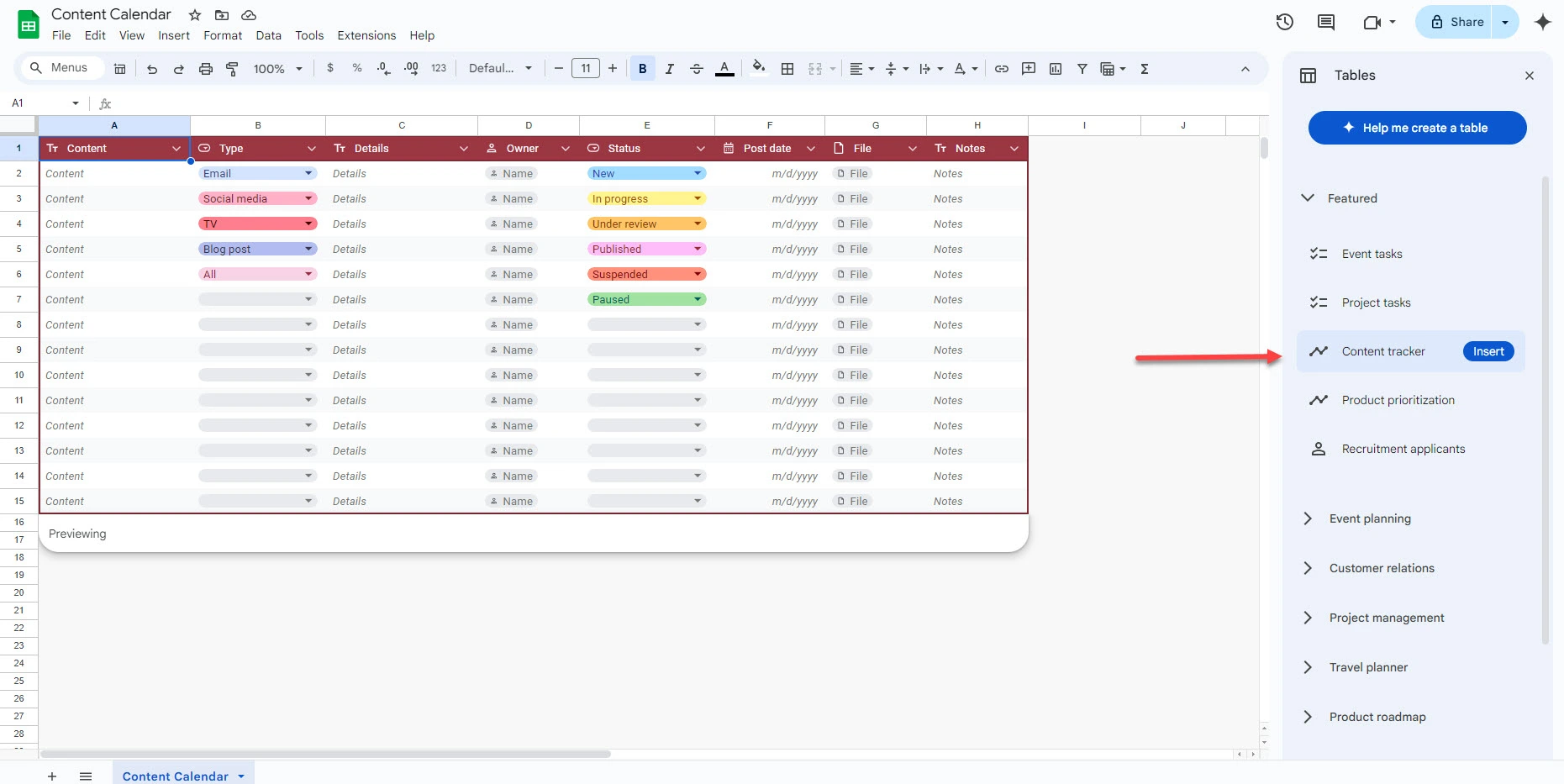How to make a table in Google Sheets?
You can make a table in Google Sheets in 5 ways:
- Enter data manually
- Insert a table
- Enter data and convert to table
- Create a table with Gemini (AI) directly in Google Sheets
- Make a Google Sheets table in Gemini and Export it
Method 1: Enter data manually
The first way to make a table in Google Sheets is to enter data into cells manually.
- In the first row, enter the column names representing the data you want to track.
- Use the remaining cells to enter your data.
For example, I created a table to store attendee data from an online event.

You can save daily hours by automating Google Sheets workflows and eliminating manual data entry. For example, you can sign up for Sheetgo to create forms to collect data from users and automatically populate your Google Sheets file.
Method 2: Insert a table
This method is helpful if you want to start with a blank table structure.
1. Click Insert > Tables at the top menu bar.


Method 3: Enter data and convert to table
On May 14, 2024, Google announced a new way to make a table in Google Sheets. Here is how it works:
1. Manually enter your data in Google Sheets



This method is also impressive because it allows you to format columns quickly.
3. Click the arrow next to a header element and choose Edit column type > Dropdown.


Method 4: Create a table with Gemini directly in Google Sheets
The fourth way to create a table in Google Sheets is to use Gemini, Google’s AI.
1. Select the cell where you want the table to start from and click the Gemini icon in the top-right corner of your Google Sheets. Then, write your prompt in the bottom-right corner and press “Enter” on your keyboard.



However, you can still click the “Retry” icon to ask Gemini to try again.

Method 5: Create a Google Sheets table directly in Gemini
The fifth way to make a table in Google Sheets is in Gemini.
1. Start a new chat in Gemini.

Here is the prompt I used:
“Create a sales inventory table for a shop that sells electronics. The table should have 15 rows and the following columns: Item ID, Product Name, Category, Stock Quantity, Unit Price, Total Value”





Table advanced formatting options
Google Sheets provides various advanced table formatting options to create professional-looking tables, such as:
1. Conditional formatting
Conditional formatting changes the appearance of cells (like background color, text color, or font style) depending on the data they contain or their relationship to other data. For example, you can use conditional formatting to highlight duplicates in Google Sheets.

2. Alternating colors
Alternating colors are excellent for large tables with many rows or columns. They help you easily follow the data across the table.

3. Filters
In Google Sheets, a filter allows you to isolate relevant information without altering the original dataset. It can also temporarily hide rows that don’t meet specific criteria.
For example, here is my table before applying any filters:


For more information, check out our complete guide on Google Sheets filters.
There are also more ways to format your tables in Google Sheets, like:
- Custom Number Formatting
- Charts
- Pivot Tables
- Custom Formulas
- Filter Views
- Tools
You can create a table in Google Sheets
And there you have it! This guide showed you five ways to create tables in Google Sheets. You can create and design the table manually or use AI (Gemini) to do it faster.
You can also check out the following guides to make better Google Sheets tables.

